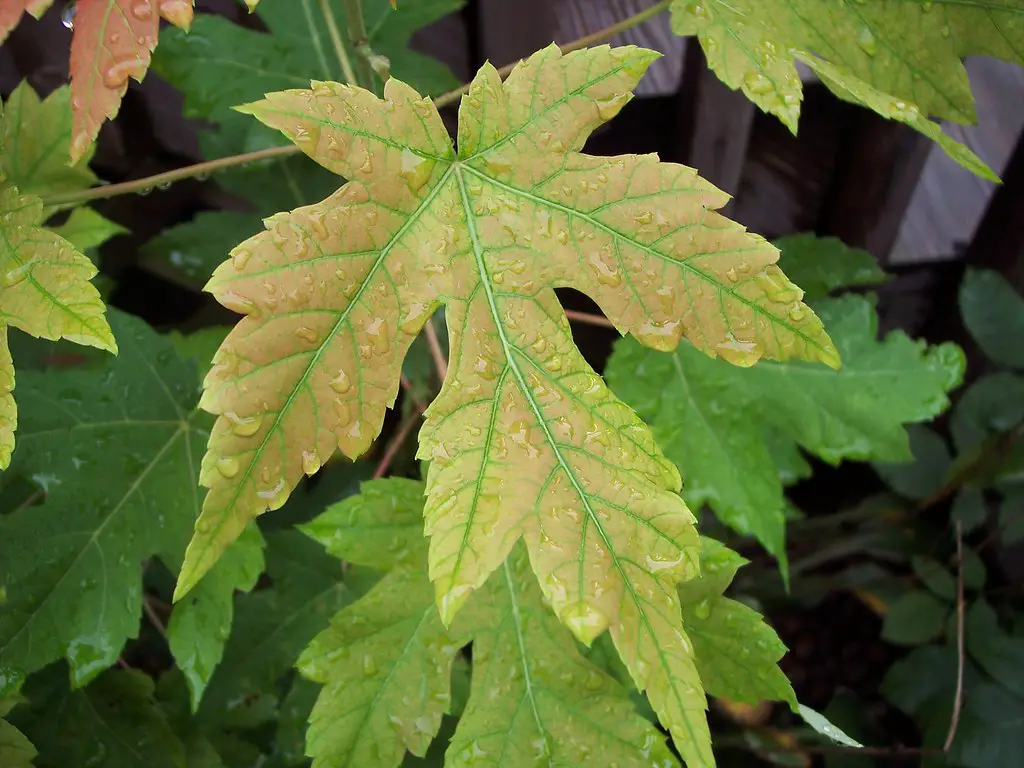The Silver Maple, a versatile and adaptable deciduous tree, is native to eastern North America. This beautiful tree is well-known for its unique leaves, which are green on top and a silvery-white beneath, hence the name “Silver Maple.” They are often found along river banks and in wetlands, playing a crucial role in stabilizing the soil and providing shelter for various wildlife species.
Silver Maples grow rapidly, reaching maturity faster than many other hardwood trees. Their swift growth, combined with their tolerance for a wide range of soil conditions, has made them a popular choice for urban and suburban landscaping. The tree’s graceful branches and brilliant fall color add aesthetic value to parks, streets, and home gardens.
However, the Silver Maple is not without its challenges. Its shallow, spreading root system can disrupt sidewalks or other nearby structures, and it is susceptible to a few diseases and pests. In this comprehensive guide, we will delve into all aspects of Silver Maple care, propagation, and troubleshooting.
| Common Names | Silver Maple, Soft Maple, White Maple |
|---|---|
| Botanical Name | Acer saccharinum |
| Family | Sapindaceae |
| Plant Type | Deciduous Tree |
| Mature Size | 50-80 feet tall, 35-50 feet wide |
| Sun Exposure | Full Sun to Partial Shade |
| Soil Type | Moist to Wet, Acidic to Alkaline |
| Hardiness Zones | 3 to 9 |
| Native Area | Eastern North America |
Silver Maple Care
Silver Maple requires minimal care, making it an attractive option for novice gardeners and professionals alike. While it can tolerate various soil types, the tree thrives best in moist, well-drained soil. Planting in a suitable location is vital, as the tree’s shallow roots can disrupt nearby structures.
Regular watering is necessary, especially during dry spells. Fertilization is generally not needed, but in nutrient-deficient soils, a slow-release, balanced fertilizer can be applied. Pruning to remove weak or dead branches will maintain the tree’s health and appearance.
Light Requirement for Silver Maple
The Silver Maple thrives in full sun to partial shade. While it prefers at least 4 to 6 hours of direct sunlight daily, it can also adapt to locations with less sunlight.
Soil Requirements for Silver Maple
Silver Maple is adaptable to a wide range of soil conditions, including sandy, loamy, and clay soils. It prefers moist to wet soil with an acidic to alkaline pH range.
Water Requirements for Silver Maple
Silver Maple requires regular watering, especially in dry conditions. While it’s tolerant of flooding and wet soil, prolonged drought can cause stress to the tree.
Temperature and Humidity
Silver Maple is hardy in zones 3 to 9, making it adaptable to various climates. It can withstand cold winters and hot summers. Humidity does not generally affect the tree significantly.
Fertilizer
Fertilizing Silver Maple is not usually necessary. However, if the soil is nutrient-deficient, a balanced, slow-release fertilizer can be applied in early spring.
Pruning Silver Maple
Pruning is essential to remove weak, dead, or diseased branches. It’s best done in late winter or early spring before the new growth begins. Proper pruning helps maintain the tree’s shape and health.
Propagating Silver Maple
Silver Maple can be propagated through seeds or cuttings. Softwood cuttings can be taken in early summer and rooted in a suitable medium.
How To Grow Silver Maple From Seed
Growing Silver Maple from seed requires stratification. The seeds should be soaked for 24 hours, then stratified in a moist medium in the refrigerator for 60 days before planting.
Common Pests & Plant Diseases
Aphids
Aphids can be controlled with insecticidal soap or neem oil.
Verticillium Wilt
A soil-borne fungal disease that can be managed by proper watering and avoiding planting in infected soil.
Common Problems With Silver Maple
Shallow Root System
The shallow roots can disrupt nearby structures. Planting away from sidewalks or driveways is essential.
Weak Wood
Silver Maple’s wood is prone to breakage in storms. Proper pruning can mitigate this problem.
Chlorosis
Yellowing of leaves due to alkaline soil can be addressed by adding sulfur to the soil.
Pro Tips
- Choose planting locations carefully to avoid conflicts with the shallow root system.
- Consider planting away from areas prone to high winds to minimize the risk of branch breakage.
- Monitor for pests and diseases regularly to ensure early detection and treatment.



